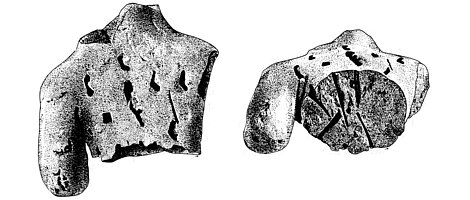Witches
WITCHES: STEREOTYPES & REALITY
Warlock & witch
At the centre of witchcraft belief stands the image of warlock and witch. The way these agents of evil were perceived is amply illustrated by the incantation texts, which reveal a certain pattern of imaginations regularly associated with them. The elements that characterize the cliché of sorcerer and sorceress in anti-witchcraft rituals include their undetermined identity, their identification with foreigners and with certain professions, mostly socially low-ranking practitioners like the snake-charmer or the eššebû-owlman, and, in the case of the witch, also exclusively female cultic offices that enjoyed a special status apart from the male world.
Female witch and male adversary
Though in principle male and female persons are accused of being the agent of witchcraft, and sorcerer and sorceress are often referred to as a pair, the image of the witch is by no means gender-neutral. The witch, kaššāptu, is primarily female and frequently addressed alone, whereas her partner, the male kaššāpu, only exists at her side. On the other hand, there is a primarily male agent of witchcraft, called bēl dabābi ‘opponent in court’, ‘adversary’. His position is complementary to that of the female kaššāptu, and like the male kaššāpu is not mentioned but in pairs with his female counterpart. The female enemy, bēlet dabābi, is never found alone in the texts, but always side by side with her male partner.
Evil activities
The texts describe the evil activities of sorcerer and sorceress at great length. They bewitch the patient, chase, seize, beat and destruct him. They scheme evil, they are angry, slander their victim before gods and men. They bind him, sully him and cause all kinds of ailments. They transfer their sorceries to the victim with food, drink, bathwater, ointments and presents, they send messages of witchcraft and recite their evil spell against the patient.

They fashion figurines representing the patient, gag them, dirty them, pierce them, burn and dissolve them in different ways, immure them, bury them in different places, e.g. in a grave symbolizing the death of the victim, under a launderer’s mat making sure that all the dirty laundry water constantly runs over the figurine, under a threshold, a gate, a bridge, under a crossroads, where people constantly trample over them.
Slander and malevolent glances are widely feared; witches eye their victims, slander them and utter evil spells. The organs of these evil actions can be personified, and the evil eye in particular, but also the evil tongue or mouth, while originally bound to a human or demonic agent, are considered to be demonic forces in their own right. The evil eye can be held responsible for all kinds of calamities in a person’s house, stable and fields, but is also regarded as a possible cause of illness.
Imagination & reality
The witches of incantation literature are a stereotype that does not correspond to a specific social reality, but the imaginations associated with the witch integrate and adapt elements of the social environment.
As in all societies, in Mesopotamia too witchcraft belief became virulent only in situations of crisis, illness and conflict. The evidence suggests that, in contrast to early modern Europe, it never took hold of whole segments of society, even though the hothouse atmosphere of the royal courts probably formed an especially fertile matrix for witchcraft suspicions. The apparent absence of large-scale witch crazes from Mesopotamian history – and with it the virtual absence of legal documents referring to witch trials – may be explained by two factors in particular:
According to the standards set out by the Laws of Ḫammurāpi, one who made a public witchcraft accusation ran a high risk of severe punishment. In the absence of direct proof, the accused was required to undergo an ordeal; if he was cleared by the ordeal, the accuser was treated as if he had brought a false charge and was executed, thereby suffering the very punishment that would have been imposed on someone found guilty of practising witchcraft.
Another factor that contributed to limiting the public impact of witchcraft suspicions lies in the fact that anti-witchcraft rituals themselves were never delegitimised and labelled as illegal magic during Mesopotamian history but continued to act as an important way of coping with the social aggressions and tensions produced and invigorated by witchcraft belief.
© Daniel Schwemer 2014 (CC BY-NC-ND license)





